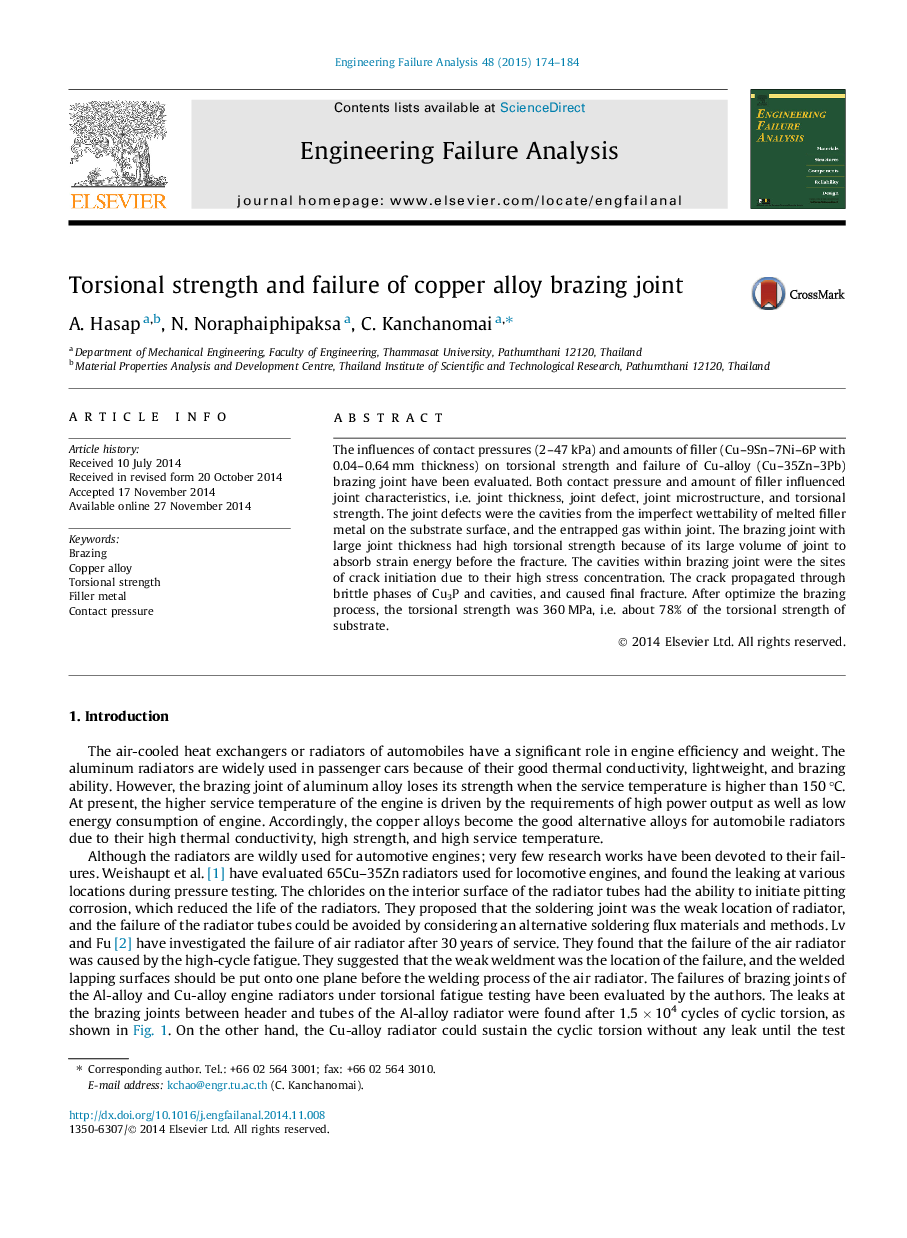| کد مقاله | کد نشریه | سال انتشار | مقاله انگلیسی | نسخه تمام متن |
|---|---|---|---|---|
| 769517 | 1462977 | 2015 | 11 صفحه PDF | دانلود رایگان |
• Copper alloys are the alternative alloys for engine radiators due to their high service temperature.
• Torsional strength and failure of Cu–35Zn–3Pb brazing joint have been evaluated.
• Contact pressure and amount of filler were the variable parameters of brazing process.
• Variable parameters influenced thickness, defect, microstructure, strength, and failure.
• Torsional strength of joint was about 78% of substrate after optimize the brazing process.
The influences of contact pressures (2–47 kPa) and amounts of filler (Cu–9Sn–7Ni–6P with 0.04–0.64 mm thickness) on torsional strength and failure of Cu-alloy (Cu–35Zn–3Pb) brazing joint have been evaluated. Both contact pressure and amount of filler influenced joint characteristics, i.e. joint thickness, joint defect, joint microstructure, and torsional strength. The joint defects were the cavities from the imperfect wettability of melted filler metal on the substrate surface, and the entrapped gas within joint. The brazing joint with large joint thickness had high torsional strength because of its large volume of joint to absorb strain energy before the fracture. The cavities within brazing joint were the sites of crack initiation due to their high stress concentration. The crack propagated through brittle phases of Cu3P and cavities, and caused final fracture. After optimize the brazing process, the torsional strength was 360 MPa, i.e. about 78% of the torsional strength of substrate.
Journal: Engineering Failure Analysis - Volume 48, February 2015, Pages 174–184
